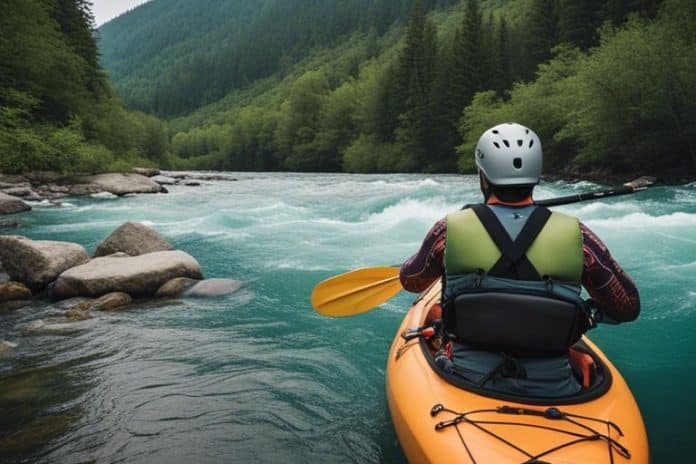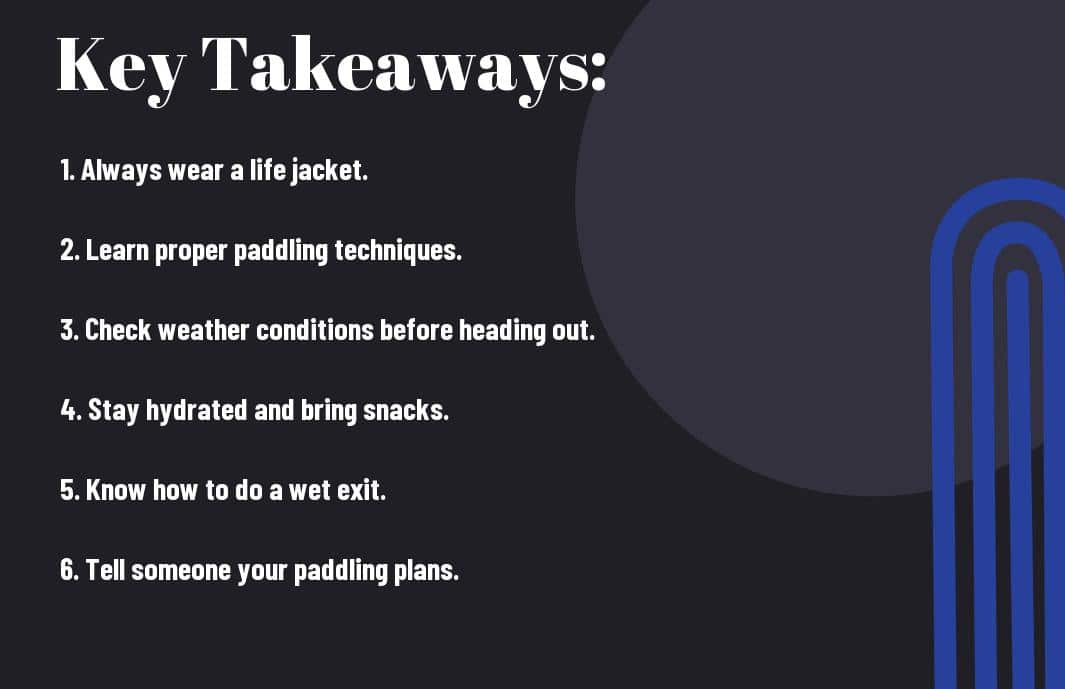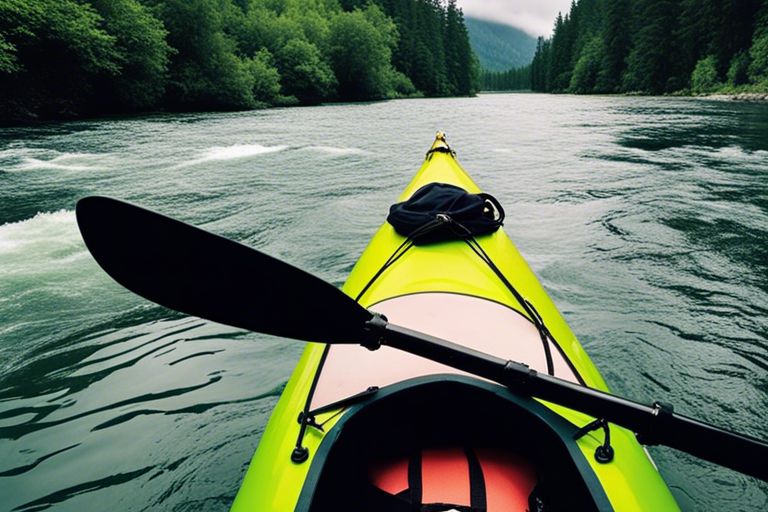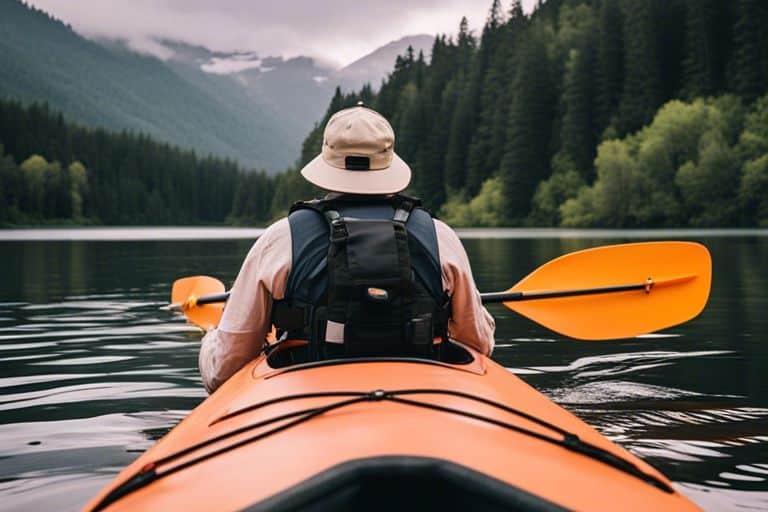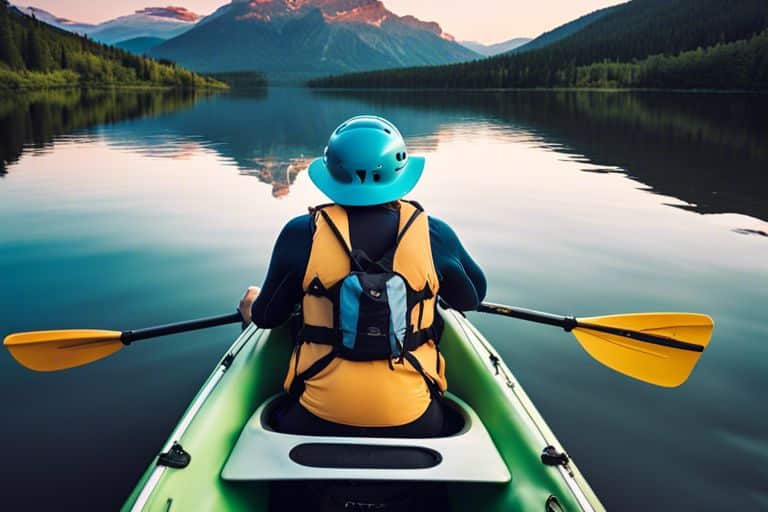There’s no denying the thrill and serenity that comes with kayaking, but it is crucial for every paddler to prioritize safety on the water. Inexperienced kayakers often underestimate the potential dangers that come with this recreational activity. Understanding and implementing safety tips can make all the difference in ensuring a successful and secure kayaking trip. From proper gear and equipment to weather conditions and navigation, this comprehensive guide will cover the necessary safety measures that every kayaker should know before hitting the water.
Key Takeaways:
- Wear a Personal Flotation Device (PFD): Always wear a properly fitted PFD while kayaking to ensure safety in case of capsizing or unexpected falls into the water.
- Check the Weather Conditions: Before heading out, make sure to check the weather forecast as strong winds and storms can pose serious risks while kayaking.
- Stay Hydrated: Bring enough water to stay hydrated during your kayaking trip, especially on hot days to prevent dehydration.
- Familiarize Yourself with the Area: Know the waters you will be kayaking in, including any potential hazards, currents, and navigation points to ensure a safe journey.
- Inform Someone of Your Itinerary: Always let a friend or family member know your planned route and expected return time in case of any emergencies.
- Practice Self-Rescue Techniques: Learn and practice self-rescue techniques such as how to re-enter your kayak after capsizing to handle unexpected situations effectively.
- Pack Essential Safety Gear: Carry crucial safety gear such as a whistle, signaling devices, a first aid kit, and a bilge pump to assist in emergencies while kayaking.
Essential Gear for Safe Kayaking
Personal Flotation Devices (PFDs)
Some of the most crucial gear for safe kayaking are Personal Flotation Devices (PFDs). They are a non-negotiable piece of equipment that can potentially save your life in case of an emergency. Wearing a PFD at all times while on the water is not only smart but also a legal requirement in many places.
Wet Suits and Proper Apparel
For any kayaker, having the right gear like Wet Suits and Proper Apparel can make a significant difference in your comfort and safety on the water. Wet suits provide insulation against cold water conditions, while proper apparel should include quick-dry clothing and water shoes to protect you from getting too cold or wet.
To ensure your safety and comfort, invest in a high-quality wet suit that fits well and provides adequate insulation. Having the right gear will keep you warm and protected from the elements, reducing the risk of hypothermia or discomfort during your kayaking adventures.
Planning Your Trip
Checking Weather and Water Conditions
Your safety begins with being informed. The first step in planning your kayaking trip is to check the weather forecast and water conditions. Unpredictable weather or rough waters can put you at risk, so make sure to stay updated on the conditions before heading out. Do not forget, it’s always better to be safe than sorry.
Route Planning and Identifying Safe Landing Spots
To ensure a safe and enjoyable kayaking experience, plan your route before hitting the water. Identify safe landing spots along your route in case of emergencies or if you need to take a break. Knowing where you can safely exit the water can be crucial in challenging situations. Research the area, map out your route, and always have a backup plan in mind.
When planning your route, consider the distance you will be covering, the difficulty level of the waters, and potential hazards along the way. Identifying safe landing spots can provide you with a sense of security and peace of mind during your trip. Being prepared and knowing your surroundings can make all the difference in ensuring your safety while kayaking.
Kayaking Techniques and Best Practices
Paddling Techniques for Stability and Efficiency
On the water, mastering proper paddling techniques is crucial for both stability and efficiency. Make sure to grip the paddle with one hand positioned higher on the shaft and the other hand lower. Rotate your torso as you paddle to engage larger muscle groups and avoid straining your arms. Keeping a strong core will help you maintain balance and power through each stroke. Practice different strokes, like the forward stroke, sweep stroke, and draw stroke, to maneuver your kayak with precision.
Navigation and Communication on the Water
With proper navigation skills and effective communication, you can ensure a safe and enjoyable kayaking experience. Before hitting the water, familiarize yourself with the route, landmarks, and potential hazards along the way. Always carry a map, compass, or GPS device to stay on course. Signaling with hand gestures and verbal cues to fellow kayakers can help prevent collisions and keep everyone in sync on group trips.
Best practice when navigating on the water is to always be aware of your surroundings and the movements of other kayakers. Staying visible with bright colored gear and using a whistle to attract attention in case of emergencies are additional tools for effective communication while kayaking.
Emergency Preparedness and Response
Keep Kayak Safety 101 in mind when venturing out on the water to ensure a safe and enjoyable experience. Being prepared for emergencies is crucial for any kayaker.
Recognizing and Avoiding Hazards
Response swiftly to potential hazards while kayaking by learning to recognize signs like rough waters, strong winds, or sudden changes in weather. Avoiding hazardous situations is the best way to ensure your safety on the water.
Self-Rescue Techniques and When to Signal for Help
When faced with a capsized kayak or injury, Knowing the appropriate self-rescue techniques can mean the difference between a minor inconvenience and a life-threatening situation. It is crucial to stay calm and remember your training when in distress. If you are unable to self-rescue or are in a critical condition, do not hesitate to signal for help using visual cues (flares, signaling mirror) or auditory signals (whistle, shouting).
To increase your chances of being rescued quickly, it is advised to carry a whistle or a marine safety whistle as part of your imperative gear. In emergency situations, do not give up hope – help is always available if you know how to request it.
Final Words
On the whole, being aware of safety tips is crucial for every kayaker to have a successful and enjoyable experience on the water. By understanding the importance of wearing a life jacket, checking weather conditions, staying hydrated, and being mindful of currents and tides, kayakers can significantly reduce their risk of accidents and ensure their own safety. It is imperative for all kayakers, whether experienced or beginners, to prioritize safety above all else each time they venture out onto the water. Note, proper preparation and caution can make all the difference in having a fun and safe kayaking adventure.
FAQ
Q: What are some important safety tips for kayakers?
A: Safety tips every kayaker should know include always wearing a personal flotation device (PFD), checking the weather forecast before heading out, informing someone of your plans and expected return time, and staying hydrated while on the water.
Q: How can kayakers avoid capsizing or accidents?
A: To avoid capsizing or accidents, kayakers should maintain a proper balance in the kayak, paddle with proper technique to avoid strain or injury, be aware of their surroundings and potential hazards in the water, and avoid risky behaviors like alcohol consumption while paddling.
Q: What should kayakers do in case of an emergency?
A: In case of an emergency, kayakers should stay calm and try to re-enter the kayak if it capsizes, use signaling devices such as whistles or lights to attract attention, and know how to perform self-rescue techniques or call for help using a marine radio or cell phone if available.
